The Post-Consumer Textile Supply Chain
October 12, 2023
Listen to my voiceover here.
Big picture
People are caring more and more about what happens to discarded clothes. These clothes, shoes and accessories from all brands (fast fashion to luxury) are being resold, repaired, reused and recycled at ever-increasing rates. Don’t get me wrong- we have barely scratched the surface, but we are getting better, together, at least on the post-consumer side of things. Everything that happens to our clothes when we are ‘done’ with them (whatever ‘done’ means to you) is what I call the post-consumer textile supply chain. This includes the processes of resale, repair, reuse, recycling, downcycling, incineration, and landfill.
The Post-Consumer Textile Supply Chain
There is a long list of stakeholders that all work within the boundaries of post-consumer textiles:
brands and retailers selling goods to consumers
Patagonia, EILEEN FISHER Inc, Walmart
individual consumers selling their own clothes, giving them away to thrift stores and donation bins and throwing them in the garbage
You, me and your mom
resellers (brands, marketplaces, thrift stores and individuals)
ThredUp, EILEEN FISHER Renew, Goodwill, your local thrift store
collectors who gather all the discarded clothing, shoes and accessories (at collection bins, farmers’ markets, from brands, etc) and sort it for it’s highest value (whether that be resale in the US or global, recycling, downcycling, incineration and landfill)
Helpsy, debrand, Green Tree Textiles, I:CO/Soex
repair + reuse specialists (cobblers, tailors)
Your local dry cleaners, MendIt, SOJO, The United Repair Center
remanufacturers (those who make new things out of disassembled old things)
Make Aneew, Sew Valley,
mechanical and advanced textile recyclers (including the de-trimmers who prepare textiles for recycling)
Circ, Renewcell, Evrnu, Ambercycle, Cirtex
textile downcyclers (who shred clothes for other uses)
Miller Waste Mills, Inc
waste collectors (departments of sanitation)
NYC Dept of Sanitation
This list represents an incredible volume of individuals, businesses and government bodies - it is big business, big dollars, big volumes and growing every day.
Brand Participation
In the US alone, hundreds of millions of customers buy products each year from brands and retailers, and those products are worn, cleaned, sometimes kept for a long time, sometimes given away, sometimes discarded. What ultimately happens to these products? I believe that brands care about what happens to their products and want to be part of that story, but the ‘how’ isn’t immediately obvious. (I’m happy to be wrong- please let me know if you disagree.) I do believe that brands want to be able to say things like:
We are ahead of the game for Extended Producer Responsibility legislation.
Here’s the data we have on what happens to our products when our customers are done with them. We are working with ___sorter___ to collect and sort these items for their highest value.
When we started our take back program we were able to see that most of our products were still in great condition, so we could proceed to resell them online and in our stores. The items that aren’t in good enough condition to be resold are recycled when possible or downcycled, and they do not go to landfill.
We are thrilled with our new partnership with __sorter___ to take damages off our hands. We had been throwing them away, but we knew it wasn’t the right thing. Thanks to ___sorter__ we are able to resell/recycle our damages which amounted to ____x#____ last month alone.
We have created a vintage resale pop up in our flagship store to the delight of our customers. We partnered with __sorter__ to collect and merchandise an amazing assortment of our goods from the last 20 years and showcase them to our most loyal customers.
We are innovating with our post-consumer product while at the same time de-risking for future laws and requirements. We are learning valuable insights and are creating a circular strategy that will benefit our company through sustainability, customer acquisition and retention and revenues.
Opportunity by Reuse Activity
The big question I’m sitting with for all of this is “How do brands want to participate with their post-consumer products?” Brands are creating these products, and in the absence of extended producer responsibility laws (or as they go into effect for the EU) how do they want to engage with this post-consumer textile supply chain? Some brands (EILEEN FISHER, Inc., Patagonia, REI, Nudie Jeans, H&M and others) have their own take back programs where customers can return items directly to the brand, and this is ideal, in my opinion. The vast majority of brands and retailers do not have such a program, and those are the brands I’m curious to learn from. I think they have multiple opportunities to participate in the post-consumer textile supply chain with or without their own take-back program.
Here are the participation opportunities for brands as I see them:
Resale:
Brands can leverage the expertise of collectors and sorters to help stock their resale programs, especially as getting enough supply can be a huge challenge.
If collectors/sorters can now supply brands with their own products for resale, (or supply resale marketplaces and resellers with product that they want to sell) that will grow the resale economy, a vital part of the circular economy. It’s not possible for every single brand (like Coach, for example) could just snap its fingers and access thousands of discarded Coach bags- some brands will always be harder to find, but collector/sorters provide a new, valuable and rich source of goods for resale for basically all brands.
Ideas for activations:
Brands can create a vintage shop in their flagship stores (even without a formal resale program, it can just be a pop up)
Brands could create a traveling resale pop-up for their stores
Depending on the volume of products brands can amass on an ongoing basis, they could create a permanent resale shop-in-shop or on their website
Repair:
For brands making high-quality items, repair should always be considered. Once the item is repaired, it will still have tremendous monetary value. Brands can purchase their damaged and used items from a collector/sorter and have them go through a refurb process either in-house or with a partner (like REVIVE, The Renewal Workshop, Tersus, Retail Reworks, Hemster, etc). Once cleaned and refurbed, those items can be resold through the brand or a marketplace.
Ideas for activations:
Offer a visible or invisible-repaired collection in a high-profile store or online
Do an influencer campaign on how repaired items are ‘better than new’ to build credibility of the brand and product
Remanufacturing:
Collect used goods and work with a remanufacturing partner (like Make Aneew) to create a new collection out of your old clothes. The storytelling for this can be incredible.
Ideas for activations:
Create a remanufactured collaboration with a young designer to bring fresh eyes to your brand
Create a remanufactured collection that is offered to your most loyal customers and/or use it as a customer acquisition tool
Recycling:
For brands or products that aren’t good matches for resale, repair and remanufacturing (probably due to lower quality items, but in some cases brands do not want to have resale even with their higher quality products), recycling should be the path they pursue. They can accumulate (with the help of a collector/sorter) a quantity of items to be sent to an appropriate textile recycler. The brand could partner with the recycler and possibly a coalition of brands to have ‘dibs’ on the recycled material once its been processed.
Ideas for activations:
Host a damaged items take-back event in your stores with the intention of feeding those items into a recycling process. Offer a discount on future purchases for participating. You can work with a collector to pick everything up and have it sorted for recyling and downcycling.
Create a special capsule collection or item highlighting recycled materials and tell the story of how customers brought items back to be recycled, where those items went, and how the brand procured the new, recycled material
Work with a collector and recycler to make sure your product is responsibly recycled or downcycled so it doesn’t end up in landfill, and tell your customers this story
Damaged Goods:
All brands have some amount of damaged and unsellable goods in their warehouses. One way to hand these off is to give or sell them to a collector/sorter who can process them for their highest value. Depending on the quality of your product, you can also monetize these items by selling them to a collector or reseller.
These are all opportunities to experiment with the post-consumer textile supply chain, to test and innovate.
Innovating Now
I believe these types of innovations are necessary as we march towards different levels of legal requirements for products like EPR, digital product passport (digital ID), outlawing incineration, outlawing textiles in waste streams and other countries banning the import of post-consumer textiles- basically a future where every brand will be held accountable for the ultimate recycling or downcycling of their product. Many of us say that we need to move towards sustainability and circularity - this is not easy- it will take testing and learning to ultimately succeed.
Let’s start NOW. Let’s kickstart this process with connection and innovation and not wait for the fines and laws. I trust that everyone reading this is doing their best, trying to make their companies better, more sustainable, more customer-friendly, etc. It’s not easy, I know.
Call to Action
I am pulling together a conversation with a number of brands to understand what they want to do, don’t want to do, are excited about, are concerned about as relates to the post-consumer textile supply chain. I worked at EILEEN FISHER, Inc for 14 years navigating the circular economy on the inside- I know these conversations aren’t easy or obvious, even for super sustainable brands; it can feel like we are each navigating this on our own, but we don’t have to. My bigger goal is to host a series of conversations on this topic to invite more brands into this process and help them navigate this space. The brands that join into the conversation will shape the agenda. (I will also host a non-brand focused conversation for those of you who want to talk about this and do not work at brands.)
Survey + Meeting Opt-In
If you work for a brand or retailer, would you please fill out this short survey on the topic of ‘brand involvement in the post-consumer textile supply chain’? Answers will be confidential, but I will share aggregated data back with those who fill out the survey. If you are interested in joining the conversation (or at least learning more) you will have a chance to opt-in during the survey.
I made survey for those of you who don’t work at brands but are interested in this topic- here’s it is!
If you are wrestling with any of the questions and opportunities highlighted in this newsletter, this is a perfect place to participate, learn, become inspired and start acting with small steps towards the future we need to create.
I look forward to hearing from you!
Cynthia
cynthia@moltevolte.com

